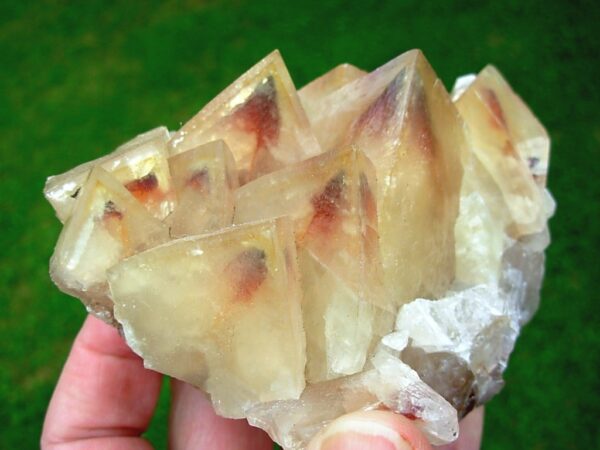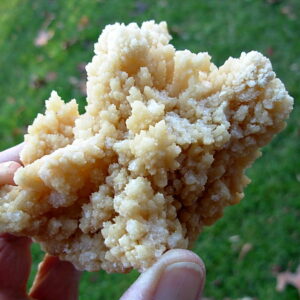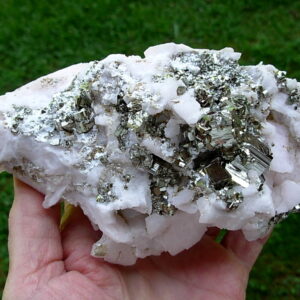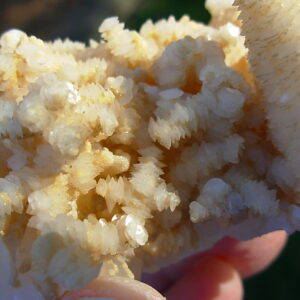Calcite
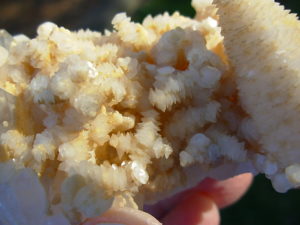 Calcite is the principal mineral of the rock group known as carbonates and is a major component in limestone and dolomite. Calcite is made of calcium carbonate which reacts to most acids (such as hydrochloric acid) and effervesces on contact. Calcite can be found in many seashells and also in caves and karsts such as the many calcite formations that we have seen in the caves across America that we have toured and explored.
Calcite is the principal mineral of the rock group known as carbonates and is a major component in limestone and dolomite. Calcite is made of calcium carbonate which reacts to most acids (such as hydrochloric acid) and effervesces on contact. Calcite can be found in many seashells and also in caves and karsts such as the many calcite formations that we have seen in the caves across America that we have toured and explored.
The color of Calcite is normally a white to clear, but it can occur in a wide range of colors, including gray, yellow, green, blue, and even shades of pink and red. It often exhibits a translucent to transparent appearance, allowing light to pass through its crystals. The luster of calcite is normally vitreous (like glass in appearance) or resinous-like (more cloudy looking appearance).
When Calcite is cleaved it has perfect rhombohedral cleavage, meaning it is easily broken along specific planes that correspond to the angles of a rhombus. This cleavage is a defining characteristic of calcite which in many cases the crystals are referred to as Calcite Rhombs. Calcite can develop a conchoidal fracture (producing curved, shell-like fractures) if struck with a hammer or similar object.
Calcite has a relatively low hardness on the Mohs scale, with a rating of 3. This means that it can be scratched by a copper coin or a steel knife, but it cannot scratch glass. Calcite sometimes may look like Quartz but a simple hardness test will differentiate the two as Quartz has a much higher hardness on the Mohs scale, with a rating of 7.
Calcite crystals can take many forms, including rhombohedra, scalenohedra, prisms, and combinations of these shapes. The rhombohedron is the most common crystal form for calcite. The combination of crystal forms often leads to complex and interesting habits.
Calcite has exceptional optical properties due to its crystal structure. It is birefringent, meaning that it can split a single incident light ray into two rays, each with a different polarization, allowing you to see two objects where there is actually only one as is seen in Iceland Spar (Optical Calcite).
Some varieties of calcite can exhibit fluorescence under ultraviolet (UV) light, such as the famous Calcite from New Jersey or Arizona, which display brilliant orange-reds under UV Light. They may fluoresce (emit visible light) in different colors, depending on what impurities are present in the Calcite.
Organic calcite is found in shells and skeletal material. It is commonly found alongside other minerals in various rock formations such as in the old Zinc mines in New Jersey where Massive Calcite is commonly found alongside Willemite, Zincite and Franklinite, or in Arizona alongside Fluorite, Willemite and Caliche to name a few. In caves, Calcite and Gypsum can form next to each other, creating beautiful formations.
Some of the different varieties of Calcite are shown below.
Click on the link Under the photo to go to that items page. Photos with no link under it are for information purposes. We will be adding and changing these as specimen availability allows.
One of a kind specimens are listed on this page
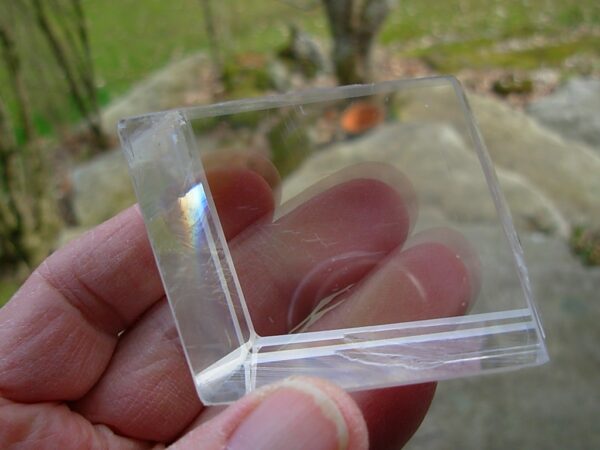
Iceland spar (Optical Calcite) is a transparent variety of calcite known for its strong birefringence, causing double refraction of light. This property made it historically important in navigation and as a tool for understanding the polarization of light. Iceland spar is also used in scientific research and education.
Dogtooth Calcite is characterized by its scalenohedral crystal habit, resembling a sharp point. Nailhead Calcite has the basic side formations of a scalehedron formation only the top sharp point looks pushed down and may have triangular angles at the top. Dogtooth calcite crystals can be quite large and impressive, making them desirable for collectors. The photo shown here is a variety of dogtooth calcite called Mariposa (Butterfly) Calcite that was mined from the 20th level of the Potosí Mine, located in the Santa Eulalia District, Aquiles Serdan, Chihuahua, Mexico in 2014.
Old Stock Calcite Specimens
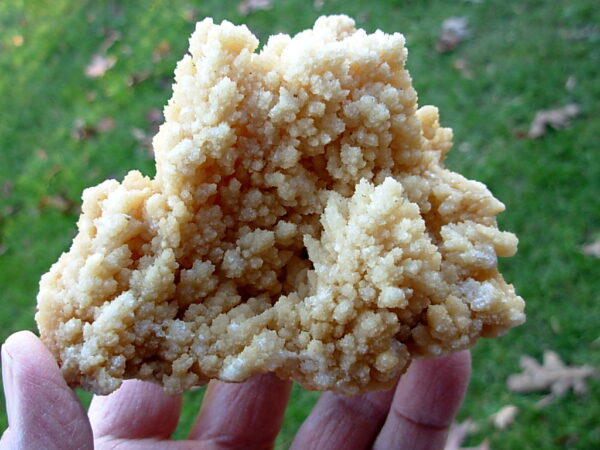
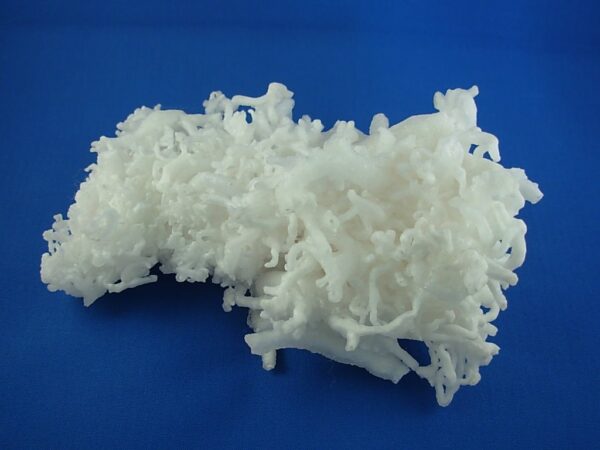
Noodle Calcite can exhibit various tiny straw-like formations that twist and curl to form a very unique specimen. The one pictured here was found in Mexico in 2004
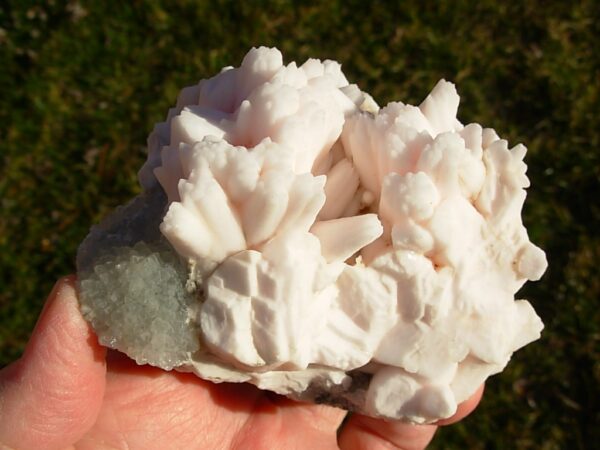
Manganoan / Cobaltoan Calcite
Manganoan Calcite contains significant amounts of manganese, which can give it a pink to reddish color. Cobaltoan calcite is another pink to purple variety which contains cobalt. It’s valued for its vibrant color and is commonly associated with other cobalt-bearing minerals. It’s often found in oxidized ore deposits.
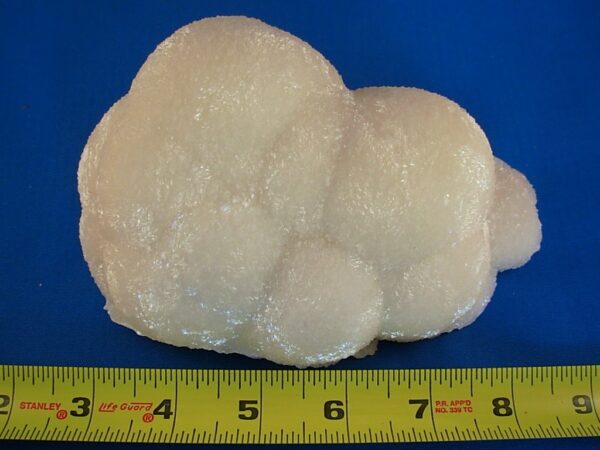
Snowball Calcite is a form of botryoidal Calcite with shimmering rough finite texture that make it look like a snowball formation. The one pictured here came from Mexico in 2005.
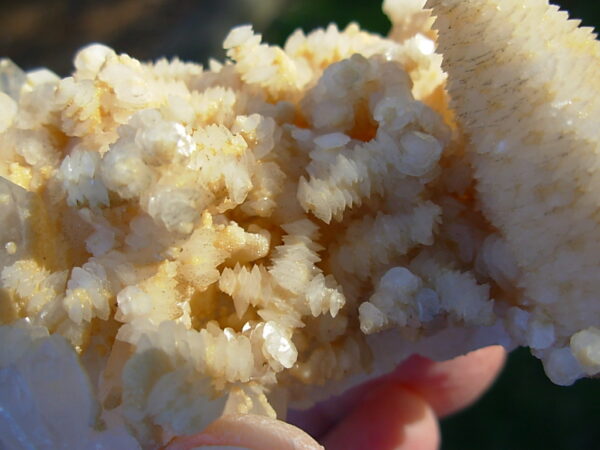
Pokerchip Calcite is another display of this minerals most interesting formations. The Calcite forms in disc like shapes that can be individual formations on a host rock or they may be naturally stacked to present very unique display specimens. This amazing specimen came from Bulgaria in 2010.
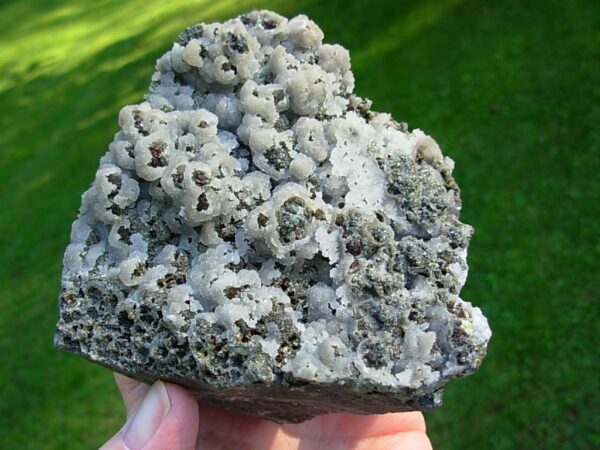
Calcite Coatings may often form on other minerals such as the specimen shown in the photo here. This is Bubbly Calcite over Chalcopyrite Crystals from the Sweetwater Mine, Missouri. It was collected in the 1960’s.
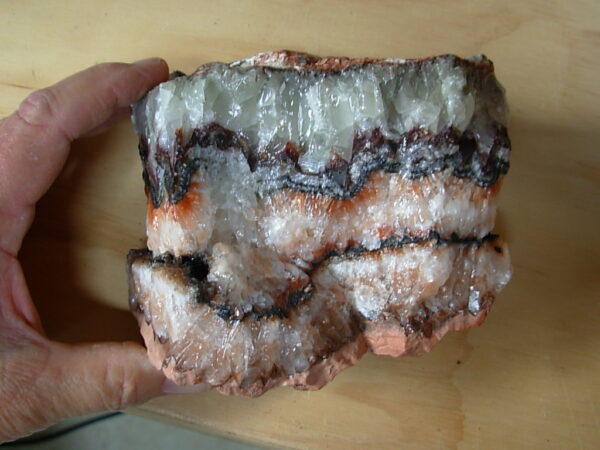
Tricolor Calcite specimens from Durango, Mexico are very delicate when they come out of the ground. To keep them from crumbling into tiny pieces, they are quickly dipped in muriatic acid. The acid not only burns off some of the rough crust, but it causes the crystals to bond together so you can have a nice, solid display piece. It also gives the piece the beautiful polished appearance.

